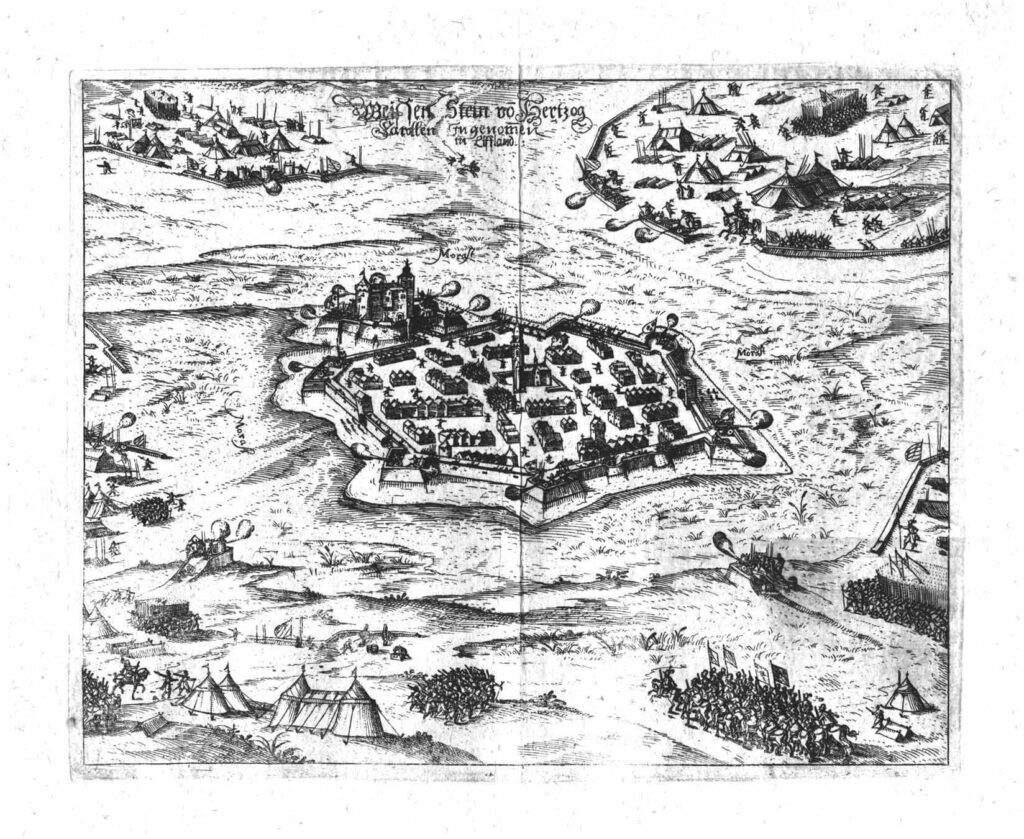
The city of Paide was started according to the Livonian chronicle then, than a year 1265 construction began on Wittenstein here (in Low German “White stone”) certainty. Pretty soon a fortress of the same name appeared around the fortress, which became 1291. also enjoy city rights. No buildings have survived from medieval Paide, only the street network and the ruins of the fortress, because this original Wittenstein was completely destroyed in the Livonian War and the subsequent Swedish-Polish War. About that time, 17. however, some copper engravings date from the beginning of the century, depicting Paide during the Livonian War. The engravings show the so-called Gothic houses surrounded by the city wall, in the central square of the church, a street network similar to today’s and, of course, security.
In Swedish times, however, Paide was rather a small settlement with log buildings built on old foundations, from whom city rights had also been revoked in confusing circumstances. In Paide, the landowner of Mäo and the citizens of Paide set out to defend their rights until the Swedish court.. City rights were restored, however, the Great Northern War swept the city of Paide away again and lost the privileges it had won back until 1783. Empress Catherine II restored Paide as a county in- or the city of the district. By that time, the city's upper German name was already in use – Whiteness. Since then, the buildings of the Old Town of Paide that have survived to this day have also originated. The so-called primeval Baltic buildings have been partially preserved, st may, which is simply put as built as the plot allowed. later, during the classicism period, of course, houses built according to the type projects and requirements of the Russian Empire will be added. The Old Town of Paide largely consists of old wooden buildings, which, fortunately, has not been rebuilt very much due to a lack of excessive wealth. 20. At the beginning of the century, a brick was added- and limestone buildings.
Although Paide could not suffer in the world wars, has been looting the Old Town of Paide since the 1970s, when more modern architecture and high-rise buildings were built instead of the so-called old lobbies. Since then, the Old Town has lost at least half of its historic buildings.
Former Paide, ie the area of the present Old Town is protected by a regulation of the heritage protection area established by the Government of the Republic. Most of the buildings marked on this page come from the protected area, but not all. The aim of the Weissenstein association has always been to highlight the value of Paide's historic buildings, so architectural, of environmental value as well as cultural history and contemporary value space. Good viewing and reading!